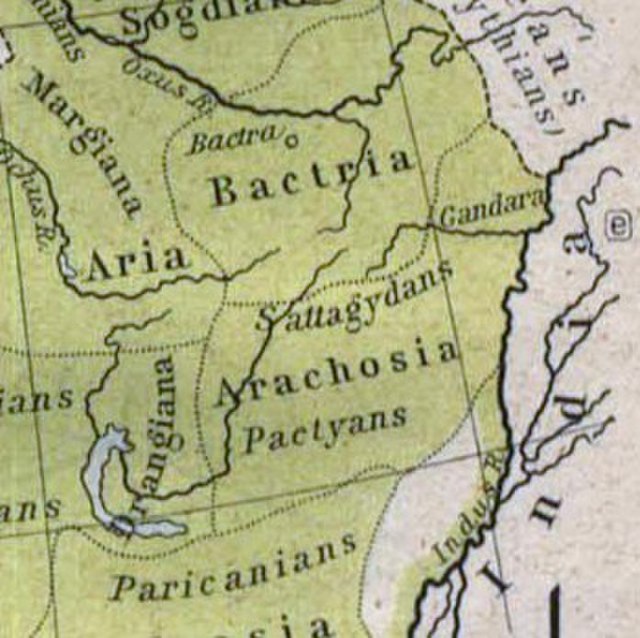Arachosia, or Harauvatis, was a satrapy of the Achaemenid Empire. Mainly centred around the Arghandab River, a tributary of the Helmand River, it extended as far east as the Indus river. The satrapy's Persian-language name is the etymological equivalent of Sárasvatī in Vedic Sanskrit. In Greek, the satrapy's name was derived from Arachōtós, the Greek-language name for the Arghandab River. Around 330 BCE, Alexander the Great commissioned the building of Alexandria Arachosia as Arachosia's new capital city under the Macedonian Empire. It was built on top of an earlier Persian military fortress after Alexander's conquest of Persia, and is the site of today's Kandahar in Afghanistan.
Depiction of Arachosian magi carrying various gifts and animals for ritual sacrifice at Persepolis
According to Roman historian Arrian, Greek explorer Megasthenes lived in Alexandropolis (now Kandahar, Afghanistan), from where he travelled to Pataliputra (now Patna, India) in the Mauryan Empire, to be received at the court of Chandragupta Maurya.
Alexander the Great with Greek troops in Arachosia (329 BCE)
Relief at Naqsh-e Rostam, on the tomb of Xerxes I, depicting an Arachosian soldier of the Achaemenid army (c. 470 BCE)
The Arghandab is a river in Afghanistan, about 400 km (250 mi) in length. It rises in Ghazni Province, west of the city of Ghazni, and flows southwest, passing near the city of Kandahar, before joining the Helmand River 30 km (19 mi) below the town of Grishk. In its lower course, it is much used for irrigation, under the control of the Helmand and Arghandab Valley Authority, and the valley is cultivated and populous; yet the water is said to be somewhat brackish. It is doubtful whether the ancient Arachotus is to be identified with the Arghandab or with its chief confluent the Tarnak, which joins it on the left 50 km (31 mi) southwest of Kandahar. The Tarnak, which flows south of Kandahar, is much shorter and less copious.
Arghandab River
Arachosia in 500 BC






